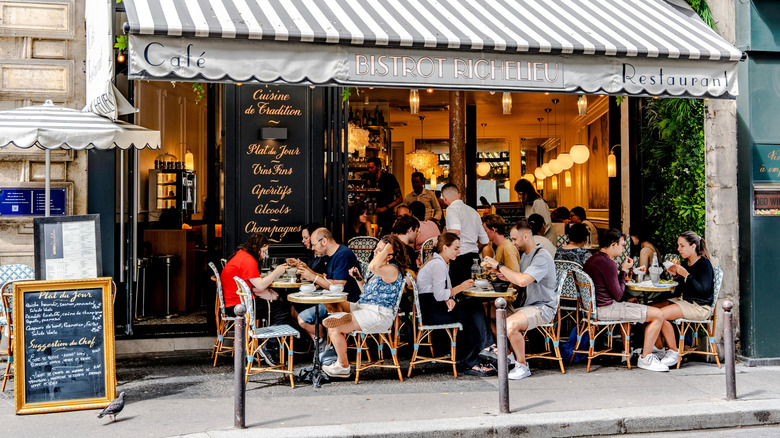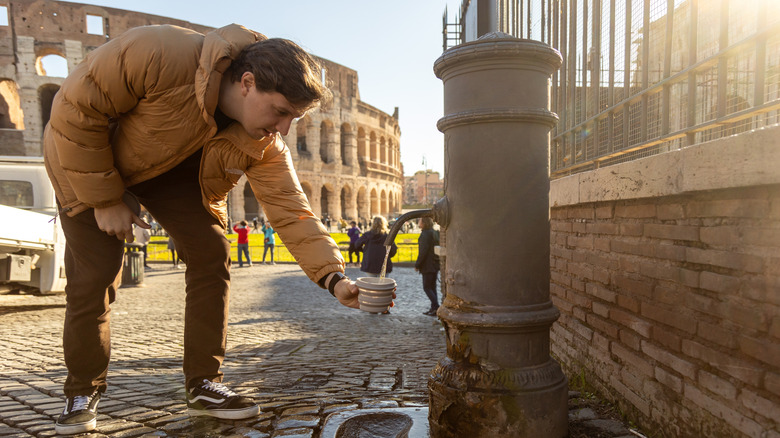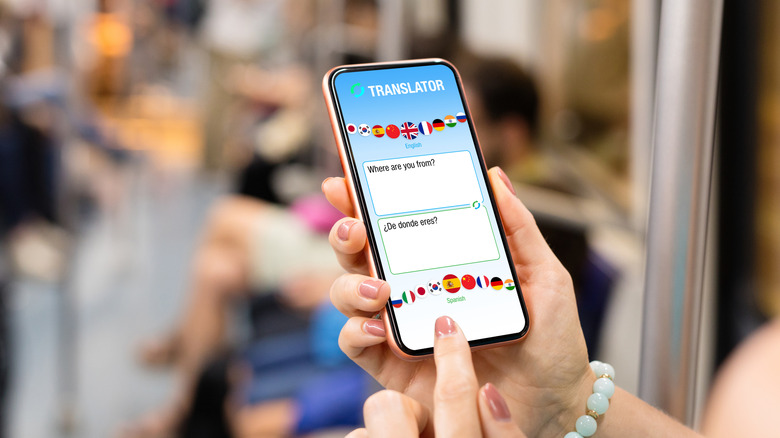Tourists Need One Word When Traveling In Europe To Save Money On Dining, Per Rick Steves
Since the early 1970s, travel expert Rick Steves has spent several months each year on the European continent researching and updating information for his plethora of guidebooks, tours, and television shows. This includes everything from staying at bed and breakfasts instead of pricey hotels to which household items to bring on vacation to which types of ATM machines to avoid.
Speaking of ATMs, if you want to use them less frequently on vacation — in other words, spend less money — Steves has a dining suggestion for you: learn the word for tap water in the local language. Just like when dining out in the U.S., ordering beverages like soda, coffee, or beer can be a surefire way to waste money at restaurants. This can make ordering a water cost-effective on your travels. With that said, while Steves' credentials are beyond reproach, we spoke with Victoria Fricke, owner of the luxury travel agency Vic's Vacations, to get a second viewpoint on the tap water situation in Europe, both in restaurants and on the street.
Come on in, the water's fine
According to Victoria Fricke, European citizens don't eschew drinking fountains in favor of bottled water the same way that Americans do. For example, visitors to Rome will find nasone (also called fontanella) drinking fountains virtually everywhere. "The water is safe, pure, cold and so refreshing. It seems a bit strange, but it's free and readily available," says Fricke. Besides restaurants and public drinking fountains, you can typically rely on the tap water from just about anywhere in populated areas — including your hotel sink.
That said, there are some circumstances, like small, rustic towns, where drinking bottled water could be considered a worthwhile precaution. If you do need to purchase bottled water, shop like a local and hit up a grocery store for the best prices. Per Fricke, "When I go to Europe I tend to go to a grocery store and buy a small case of larger bottles of water and I use that to refill my smaller bottle." Whether your water comes from the tap or a bottle, make sure to stay hydrated. Chances are, in the course of sightseeing, you'll be doing a lot more walking than usual.
Google Translate is your friend
Circling back to Rick Steve's original tip about learning how to ask for tap water in restaurants and cafes, there are many ways to accomplish this. While you could research the proper terminology at home, retaining that information during your travels may be a challenge — particularly if several European countries with different languages are part of your itinerary. Victoria Fricke advises that travelers consult Google Translate to learn the proper terminology. While this can be a great on-the-fly approach while preparing to order your meal, vacation-goers can also search for terms in advance and even save them in a notes-style app on their smartphone for quick access. "While [Google Translate] is my number one suggested app, others like DeepL and Papago are great, too," says Fricke.
Of course, visitors to Europe won't want to drink tap water all the time. It's important not to be so obsessed with saving money that you fail to partake of local beer, wine, or coffee — major parts of the cultural experience. Like with so many things in life, moderation and knowing how much of your income to spend on a trip can be the key to not overspending. Though it's good advice to avoid excessive coffee or alcohol on the days when you'll be flying.


